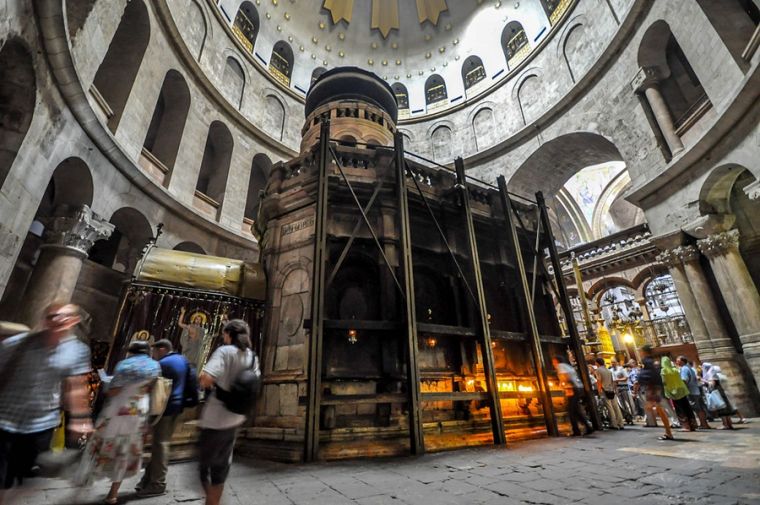Jesus Tomb Now Free Of Iron Cage That Has Protected It From Collapse For 70 Years As Part Of Renovation

The iron cage that has protected the tomb of Jesus for 70 years is gone.
In another engineering feat related to the renovation work on Christianity's holiest site, engineers last week completed the removal of the cage, the structure of girders that British experts built in 1947 to prevent the tomb from collapsing, Haaretz reported.
The chamber at Jerusalem's Church of the Holy Sepulchre that is said to enclose Jesus' tomb is called the Edicule, which means "little house" in Latin. It is said to be the site where the body of Jesus was placed before He resurrected nearly 2,000 years ago.
A team from the National Technical University of Athens started working to stabilise the Edicule before beginning the removal of the iron cage in June 2016 as part of the renovation project on the site.
That was the time when Christian churches that have custody over the holy site finally ended their disagreement on how to proceed with the repair work on the Holy Sepulchre.
"The British did good work, and it is good that they put up the cage, but now our models have shown that the structure is stable and [the cage] may be removed," said Prof. Antonia Moropoulou, the head of the team from the Greek university undertaking the renovations.
Following the removal of the iron cage, Moropoulou said their next project will include excavation of the floor surrounding the Edicule and repair of the drainage system. "Under the Edicule there are excavations, tunnels, sewage and groundwater, and the entire monster is rising up and threatening the structure. The foundations must be stabilised," she said.
The Greek expert said she expects the renovation to be completed by mid-April, in time for the Orthodox Easter.
In November last year, researchers for the first time uncovered the tomb of Jesus, which yielded new revelations.
Engineers—under the watchful eye of National Geographic cameras—carefully removed the marble slabs that lay over the tomb since 1555 A.D.
After examining the tomb, the team of researchers announced that what they found appeared to confirm that portions of the tomb are still present today after surviving centuries of damage, destruction, and reconstruction of the surrounding Church of the Holy Sepulchre in Jerusalem's Old City.
Jesus' tomb consists of a limestone shelf or burial bed that was chiselled from the wall of a cave. The burial bed had been covered in marble cladding, apparently to prevent pilgrims from removing bits of the original rock as souvenirs, according to National Geographic.











